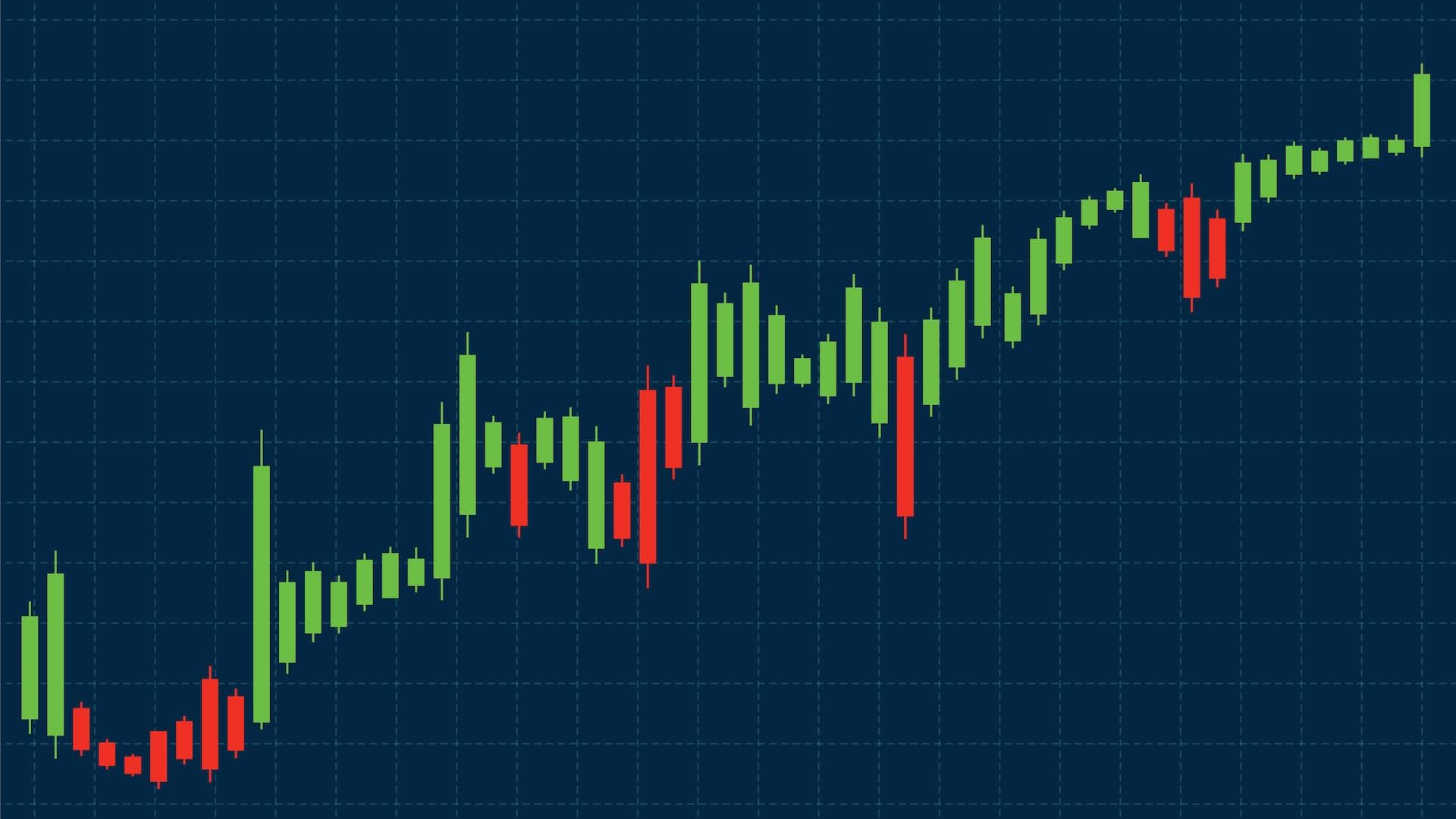Trading has always attracted attention, from stories of quick fortunes to cautionary tales of devastating losses. Because of this, myths about trading spread quickly and can discourage beginners or give them the wrong expectations. Some people think trading is no different from gambling, while others believe you need a huge fortune to start. The reality is often more balanced and practical.
In truth, traders work with a wide variety of financial instruments, from stocks and currencies to commodities and derivatives. They often rely on price charts to analyze trends, spot opportunities, and decide when to enter or exit a position.
If you are thinking about stepping into trading, understanding what is true and what is not will save you time, money, and frustration. It also helps to align your trading approach with your financial goals, whether that means short-term speculation or building wealth steadily over time.
In this guide, we’ll explore the most common myths about trading and reveal the facts behind them.
Debunking trading myths
Why myths persist in forex trading and day trading
Trading myths often survive because success stories get more attention than the less glamorous reality. A trader making quick gains in the forex market makes for an exciting headline, but the months of practice and learning behind that success rarely get shared. Social media has also amplified unrealistic expectations by highlighting winning trades while hiding losses.
In reality, most brokers now provide demo accounts and educational resources to help new traders practice before committing real funds. Opening a brokerage account is often the first step, but building experience and discipline matters far more than rushing into live trades.
How understanding market conditions helps beginners
Markets move for many reasons: economic news, interest rates, or shifts in global sentiment. When beginners take the time to learn why prices move, myths lose their grip. A strong understanding of conditions allows traders to develop strategies that fit the environment and approach the market with realistic expectations instead of false hopes.
Myth 1: You can get rich overnight with day trading
Reality of day traders’ earnings
While some day traders may make fast profits, the idea that you can become wealthy overnight is misleading. The truth is that most individual traders experience ups and downs, and consistency takes time. Clear trading goals are essential, whether the aim is to generate side income or build toward full-time trading.
Role of demo account practice in managing expectations
Practicing on a demo account helps traders see the pace of real markets without risking capital. Platforms like 24markets.com provide demo accounts that let beginners test strategies safely before moving to live trading. This step is valuable not only for new traders but also for more experienced traders who want to refine or test new methods before committing real money.
How market volatility impacts short-term profits
Volatility creates opportunities but also risk. Prices can swing in both directions, and without discipline, traders may lose as quickly as they gain. Having defined goals and consistent strategies helps traders navigate these swings more effectively.
Myth 2: Forex trading is purely luck
Importance of fundamental analysis in forex markets
Luck may play a role in one or two trades, but long-term success in forex requires knowledge. Traders study economic indicators, central bank policies, and global news to anticipate market moves. For active traders, this kind of research is crucial because it not only helps with short-term speculation but also provides context for medium-term price movements that can shape broader strategies.
Using market analysis to make informed trades
Market analysis combines technical charts with fundamental insights. This balance allows traders to plan entries and exits with more confidence. Since many brokers now provide access to both charting tools and fundamental data, it has become easier for traders to combine both approaches in their daily decision-making.
Interest rates and economic indicators that drive forex markets
Currencies often react strongly to changes in interest rates, inflation, or employment data. A trader who follows these indicators can anticipate movements far better than one who relies on chance, improving both short-term outcomes and the ability to align with medium-term trends.
Myth 3: You don’t need a strategy
Position trading vs day trading strategies
Strategies are essential. Position traders may hold for weeks or months, while day traders act within hours. Both approaches need a plan that defines risk and potential reward. While day trading often involves frequent trading, position trading focuses more on capturing broader market moves.
How planning trades improves risk management
A plan sets entry points, stop-loss levels, and profit targets. This structure helps remove emotion from decisions, which is where many novice traders often go wrong. Having a clear framework ensures that even those just starting out can avoid costly mistakes.
Adapting strategies to current market conditions
Markets are dynamic. A strategy that works in a trending market may fail during a period of consolidation. The best traders adjust and refine their approach as conditions change. Even institutional investorsrecognize the importance of adapting strategies, and while their time horizons may differ, the principle of flexibility applies to everyone.
Myth 4: Technical tools guarantee profits
Limitations of charting and signals
Charts and signals are useful, but they are not magic. Indicators show probabilities, not certainties. Over-relying on them can create frustration. That’s why understanding core trading principles is just as important as reading patterns on a screen.
Combining technical tools with fundamental analysis
The strongest trades often come from aligning technical setups with fundamental events. For instance, a bullish chart pattern combined with strong economic data creates a higher probability trade. Sometimes this alignment comes at a specific price level where both technical and fundamental factors meet, making the trade setup even stronger.
Using demo accounts to test strategies safely
Beginners can experiment with tools in a demo environment. On 24markets.com, demo trading allows new traders to test indicators without financial risk. Even successful investors often recommend starting this way, since it builds confidence and helps traders refine their approach before committing real money.
Myth 5: Day trading is easy for beginners
Challenges of beginning day trading
Day trading requires quick reactions, a calm mindset, and solid preparation. Beginners often underestimate the difficulty, entering trades impulsively and suffering losses. This is especially true in volatile market conditions, where prices can swing sharply within minutes.
Emotional discipline and risk awareness for new traders
Controlling emotions like fear and greed is as important as technical skills. Without discipline, even the best strategy can fail. Many who trade foreign exchange markets quickly learn that discipline is what separates short-term survival from long-term success.
Understanding market volatility before live trading
Volatility is double-edged. It creates profit opportunities but also magnifies mistakes. New traders should spend time studying volatility patterns and following market news, since events like economic announcements or policy changes can trigger sharp price moves. Understanding how news impacts volatility prepares traders to react calmly instead of being caught off guard.
Myth 6: Forex markets are too risky
Risk management techniques for forex trading
Risk exists in all financial markets. What separates profitable traders from those who struggle is their ability to manage it. Setting stop-loss orders and using proper trade sizes helps protect capital and ensures that results are not left entirely to chance.
Leveraging position sizing and stop-losses
Position sizing determines how much of your account is at risk on each trade. Stop-losses limit potential losses and give traders peace of mind. These techniques are at the core of evaluating trading performance, since consistent results depend more on controlling losses than on chasing oversized wins.
How volatility can create both opportunities and threats
Volatility may seem dangerous, but it also provides the price movement traders need to make profits. In fact, higher day trading volume often occurs during volatile periods, creating opportunities for disciplined traders. With careful planning, volatility becomes a tool rather than a threat, helping traders find a balance between opportunity and protection.
Myth 7: You must monitor markets 24/7
How automated tools and alerts help day traders
Modern platforms, including 24markets.com, provide alerts and automation features. These help traders stay informed without staring at charts all day. They also support more informed trading decisions, as alerts highlight price levels and patterns that align with your plan.
Importance of market analysis over constant monitoring
Smart analysis beats constant monitoring. Planning trades ahead of time is more effective than chasing prices in real time. History shows that when active traders underperformed, it was often due to overtrading or reacting impulsively instead of following a structured plan.
Myth 8: High-frequency trading is necessary to succeed
Different approaches: day trading vs position trading
High-frequency trading is a professional domain that requires advanced technology. Retail traders can succeed using more accessible methods like swing or position trading. Many beginners first learn how to trade stocks, since equities are familiar and often easier to understand than more complex markets.
Long-term strategies in volatile markets
Holding positions over longer periods can help smooth out volatility. Investors and position traders can still find success without rapid-fire trading. In these cases, evaluating a company’s financial health becomes especially important, as strong fundamentals can support long-term growth even when markets fluctuate.
Balancing active trading with proper risk controls
Whatever the strategy, risk controls like stop-losses and diversification remain key to sustainable performance. Each trader must decide how much they are willing to risk on any single position, making capital preservation just as important as profit potential.
Myth 9: You can ignore macroeconomic factors
How interest rates influence forex markets
Interest rates shape currency values. Higher rates often attract foreign capital, strengthening a currency, while lower rates may weaken it. Traders using platforms like Interactive Brokers can access real-time data to respond quickly to these shifts.
The role of economic news in market volatility
Announcements like employment data or GDP releases frequently move markets. Ignoring them can lead to surprise losses, highlighting the significant risks involved in forex trading.
Integrating fundamental analysis with technical tools
Blending macroeconomic awareness with chart analysis creates more complete trading decisions. Traders who commit to continuous learning and combine fundamentals with technical tools gain a clear advantage over those who ignore either aspect.
How to start trading safely
Using a demo account to practice trading strategies
Before committing capital, practicing on a demo account builds skills and confidence. Platforms such as 24markets.com offer realistic simulations that mirror live market conditions. This allows beginners to hone their trading acumen without risking money they cannot afford to lose.
Planning trades based on market conditions
Each trade should be based on analysis of current conditions. This practice helps reduce emotion-driven decisions, allowing traders to manage risk effectively while improving consistency.
Setting realistic expectations as a beginner day trader
Beginners should aim for gradual improvement rather than instant success. Building discipline and knowledge is far more valuable than chasing quick profits, and it helps ensure that only money they can safely risk is put on the line.
Separating myths from reality
Key takeaways about day trading and forex trading
Trading is not gambling, nor is it a guaranteed way to get rich overnight. Success comes from patience, education, and practice, as well as applying well-defined risk management strategies to protect your amount of capital.
Importance of education, practice, and analysis
The strongest defense against myths is knowledge. Traders who study, practice in demo environments, and analyze both technical indicators and fundamental factors have the best chance of success. For anyone ready to begin this journey, 24markets.com offers tools, education, and support to help turn learning into action.













